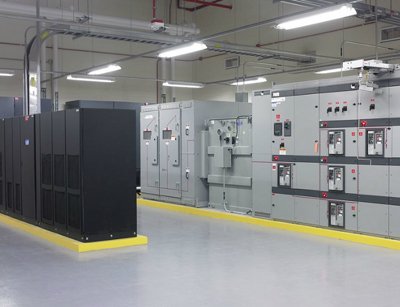Eaton has opened two data centers in the US designed to bring the company huge energy savings.
Born out of the consolidation of 26 separate computing environments and Eaton's two main data centers near Cleveland, Ohio, the data centers replace in IT environment that at one data center was up to 43-years-old and in need of an upgrade.
Power and space were running short at the main data centers in Cleveland, and Eaton had accumulated many remote data center locations following 30 acquisitions of companies such as The Moeller Group and Pheonixtec.
It also wanted a solution that would reflect the company's ethos around power that it uses to promote its own power management products.
The data centers in Simpsonville and Louisville, Kentucky, are designed to LEED Gold standards ÔÇô Simpsonville has already achieved the rating, while Louisville is expected to achieve it in coming months.
Both contain two 10,000 sq ft data halls, the second phase of which will be built once the first is fully developed.
Eaton phased the build of its first and second data centers so it could apply lessons learnt from the first project to the second.
The Simpsonville project was used as the blueprint. Eaton started its construction in February 2010. The Lousville site broke ground in June 2010.
Running on empty
Eaton VP of Enterprise Infrastructure Services Rob Agar told DatacenterDynamics in December last year that Eaton's previous main data centers, measuring 9,000 sq ft and 7,00 sq ft, could only support power densities of 45 watts per sq ft.
Data had to be replicated between both for failover, but with one facility being so old, the cost of reconfiguring was taking a toll and problems with airflow, among other areas, had stopped the data center operations team from installing new technologies required to keep the site running.
Both new data centers are now 14 miles apart and run on similar hardware, with data replicated synchronously between both to support about 100 business-critical applications and plenty of room to grow.
A third disaster recovery site about 250 miles away will also be used.
Eaton has seen revenue grow by US$2.2bn in the last two years. Its new data centers are expected to keep even more cash in its coffers, saving company an estimated US$23m in energy savings over the next two decades.
Eaton Chairman and CEO Alexander M Cutler said both data centers will strive towards an aggressive power usage effectiveness (PUE) rating.
"As a power management company, finding innovative ways to enable our customers to reduce energy costs and to use power more efficient, effectively and safely is central to Eaton's mission," Cutler said.
Holder Construction worked as the general contractor for the data center projects and EYP Mission Critical Facilities (now HP Mission Critical Facilities) provided electrical and mechanical engineering services while Mark G Anderson Consultants managed the program management services.
Eaton has, of course, done this using some of its own technologies. Eaton 9395 Uniterruptible Power Systems are used at the facilities. It is also using its 400V ePDU product to allow servers to run at 230V, further increasing efficiencies and its Foreseer Enterprise Power Monitoring software and building management systems to offer a real-time view on the electrical and mechanical and line safety of the system along with its Wright Line Heat Containment System.

